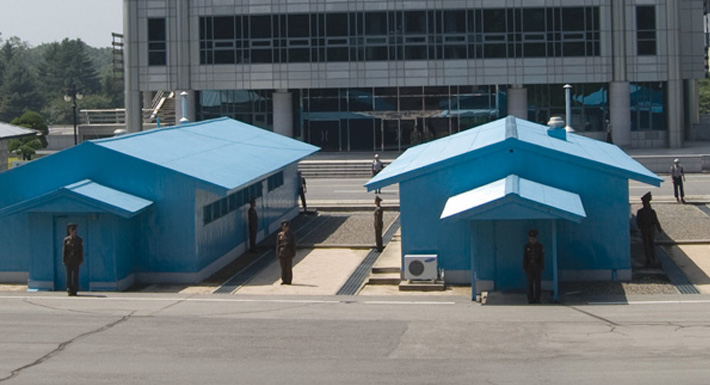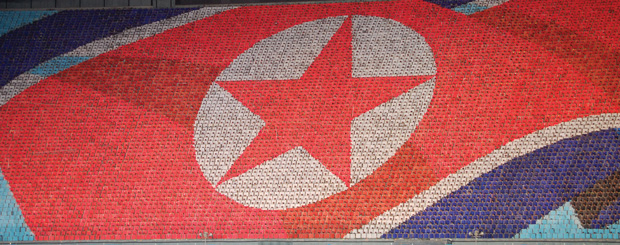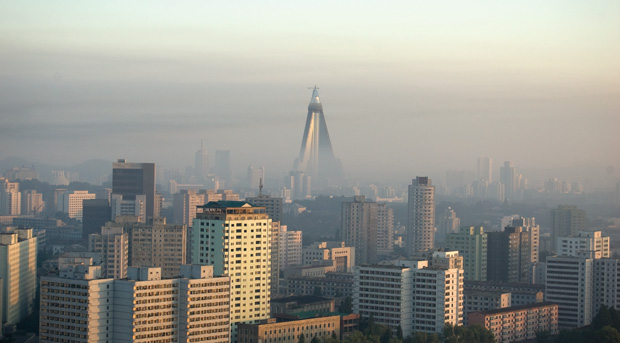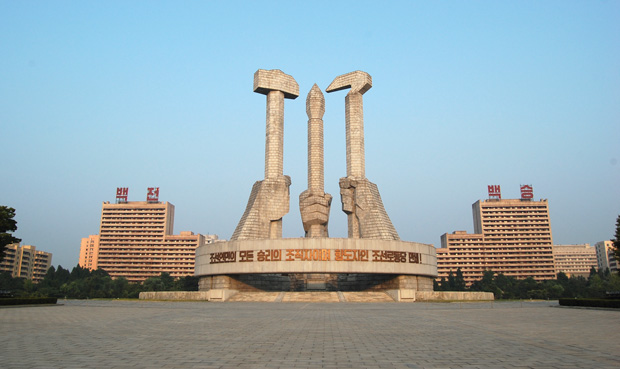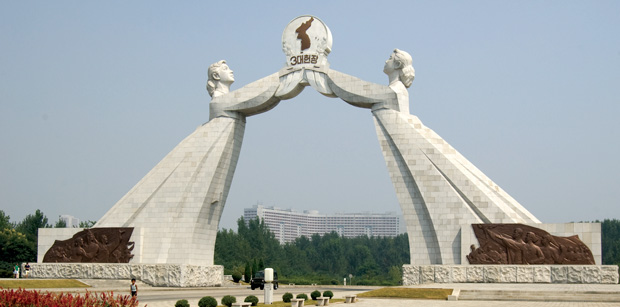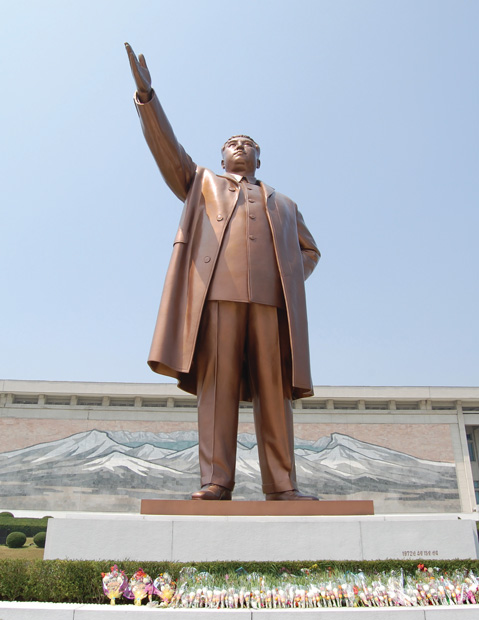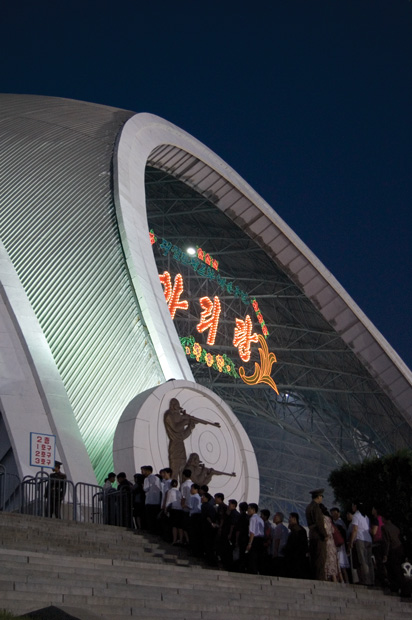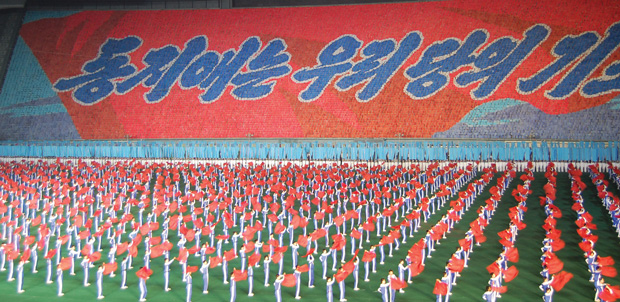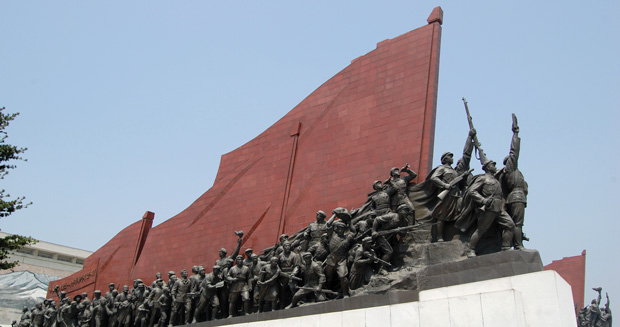By Christopher Jones
On a clear day in September our Soviet built Tupalev Tu-154 touched down in Pyongyang, capital of the Democratic People’s Republic of Korea, one of the most secretive, isolated and dangerous countries in the world. As we hit the tarmac of Sunan International Airport, a loudspeaker crackled: “Ladies and Gentlemen, we have arrived in Pyongyang.” The stewardess continued, “We are celebrating 65 years of victory over the Imperial Japanese Army,” a bizarre introduction to an incredible journey.
Welcome to North Korea.
We arrived on a deserted runway overlooked by a giant portrait of the Eternal President Kim Il Sung, who still ‘guides’ the country even though he died in 1994. We flew on the government military airline, Air Koryo. The sluggish takeoff and the water dripping from the ceiling are some of the possible reasons the European Commission blacklisted the carrier for being unsafe, saying on an EU website, “Air Koryo’s operations are fully banned in the European Union.”
The Hermit State
Getting a visa to North Korea is not easy, especially at a time when recent atomic tests have put the communist state in the news. Earlier this year two American journalists, Laura Ling and Euna Lee, were captured after illegally crossing the border from China. A court sentenced them to 12 years of “reform through labor,” in what Reporters Without Borders called a ‘sham trial.’ Their release came only after former US President Bill Clinton flew to the capital to negotiate their freedom.
While critics may chide me for visiting a country ruled by a dictatorship, where the state controls everything and normal people are on the brink of starvation, the chance to travel to the last Stalinist country was difficult to pass up. On our arrival we found a surprisingly quiet, beautiful and disturbing place that refuses to move on, stuck with 1950s-like paranoia, propaganda and fear.
As introductions to new cultures go, this was by far the weirdest. We stayed at Yanggakdo Hotel, the only operational hotel in the city. It is a 40 story tower with a revolving restaurant on an island in the Taedong river, accessible only by bridge and calling to mind the line from the Eagles song Hotel California: “You can check out anytime you like, but you can never leave.” Our room had hot water, an empty mini-bar and, incredibly, a television. We could watch local propaganda cartoons and foreign channels including China’s CCTV, Russian channels, BBC, and even Japan’s NHK World (carefully censored, of course). The lack of American channels was a subtle reminder of the country’s policy toward the United States.
The next week was sensory overload—countless statues, posters, educational videos, a visit to a giant mausoleum, and the grand finale: the Mass Games.
Our cell phones were confiscated on arrival and internet access was blocked, but we noticed our guides carried mobile phones, which according to sources is due to a recent deal with Egyptian company Orascom Telecom. The BBC, however, reports that the network “allows access only to senior government officials.”
The wide boulevards of the city were deserted, making for an eerie sight, but an occasional modern black SUV sped past, proof of some contact with the outside world. The grey Soviet style concrete buildings looked old and decaying, and faded communist and DPRK flags hung on every street. Posters and huge murals remind the public that the revolution and war is still a very real part of life in the DPRK.
A Country Divided
On June 25, 1950 North Korean troops opened fire on Southern, Republic of Korea troops stationed on the 38th parallel. At 11am the communist North declared war on the South, and the three-year Korean War began.
The official guidebook of the DPRK, published by the National Tourism Administration, says, “The Korean war, forced by US imperialists, was a harsh trial to the Korean people. President Kim Il Sung led the three year long war to victory, defeating the US. Korea, where everything was reduced to ashes, took up a new look after cease-fire, and started comprehensive construction of socialism.”
The border area at Panmunjom marks the divide, which in the South has become a strange tourist attraction, so it was incredible to be among the few who to see it from the other side. We drove up the reunification highway under the vast Arch of Reunification, an enormous monument of two Korean girls uniting hands. Like most socialist art, the meaning was very literal and
the sheer scale overwhelming.
As we approached the border we were once again briefed. In the background we could hear automatic weapons being fired; in front of us was barbed wire and concrete traps to stop tanks.
A vast map pointed out the Northern and Southern parts, and we couldn’t help but think that most of the drama was staged for our benefit. However what was real was the danger—CNN described the demilitarized zone as “one of the most heavily armed areas in the world.”
Before we descended the steps to the 38th parallel, we were shown another conveniently placed monument: a giant copy of Kim Il Sung’s signature carved into marble, copied from a document he allegedly managed to sign on his deathbed. Kim’s plan involves reuniting the two countries under communism, something highly unlikely today, when according to Business Week the state-controlled economy is “one thirty-eighth the size of South Korea’s ($935 billion) economy.”
Inside the historic huts that straddle the border we were able to step over the official dividing line. Troops guarded the door, and we were told by our guides that “the Americans are listening to us” through the microphones that sat on the negotiation tables. Looking to the South we could visibly see the gap between the cultures. The new cars and roads on the Southern side dramatically contrasted with the cracked concrete and worn vehicles of the North.
The Mass Games
We returned to the capital for the climax of our trip, the Arirang Mass Games. The enormous spectacle described by the official government program as a “breathtaking mystery” that was “created as the personal initiative of leader Kim Jong Il, prepared and made perfect under his guidance.”
The games were staged inside the May Day stadium, claimed by the guidebook to be “the largest in Korea with a seating capacity of 150,000 people.” Imagine the opening ceremony of the Olympics being performed every week—the noise was deafening as the thousands of performers warmed up.
The backdrop of the show was made up of 10,000 school children holding giant colored books. Each page made a pixel, which when viewed as a whole created a giant constantly changing mosaic. The whole performance was controlled by a flag-waving conductor, and the children didn’t make a single noticeable mistake.
A soldier quoted in a government produced DVD of the show proudly said, “We unified our hearts and movements to make the best performance.” The guide described the show as, “the history of the Arirang Nation, in tears, pleasure and hurt for the future.” Originally a folk tale, the story has been used as a vehicle for the regime’s propaganda. Basically it tells the tale of two separated lovers, who are brought to life by opera singers, giant projected animations, mass dance routines, and a scary tae kwon do demonstration by the armed forces.
The 90-minute multimedia show ended with fireworks, gymnastics and lasers, portraying a happy and prosperous life under socialism; unfortunately the hungry-looking people in the streets didn’t match the vivid images in the stadium.
Departure
We left our journey on the only train out of Pyongyang, a slow relic once hailed as the pride of the country. Our tickets were checked by four people in military uniforms before we could board, and each carriage displayed the twin portraits of father and son Kim. The journey to the Chinese border revealed the abject poverty of rural North Korea. Slogans on wooden boards and flags littered the fields, people worked with no visible tools, women carried bundles on their backs, and toddlers ran about with no clothes.
An occasional armed unit stared at the train as it passed, and some eager children waved at us through the windows. Before we got to China (and relative freedom), our train was searched for several hours, although as the state controls every shop, we were not sure what the guards could possibly be looking for. Our digital cameras, too, got a thorough scan, and any pictures of poverty or soldiers were deleted. Only one of my memory cards got away unscathed.
Within a few hours a river came into sight, and the shiny, new towers in the distance meant we were approaching Dandong, China. The bridge across was one of a pair built by Japanese forces during Korea’s occupation; the second one was bombed during the war. The locomotive’s arrival at a bright, modern train station signaled the end of our journey, and we heaved a sigh of relief as we realized there were no guards watching us. After just a week in the DPRK, we had started to feel guilty just going to the bathroom without permission.
This year celebrated the anniversary of the fall of the Berlin wall and the reunification of Germany, something thought impossible sixty years ago… we couldn’t help but wonder what Korea will look like in sixty years.

